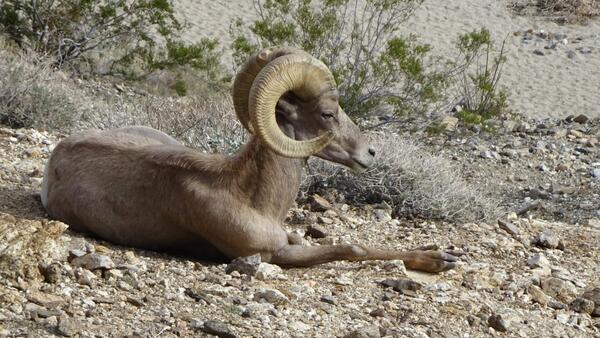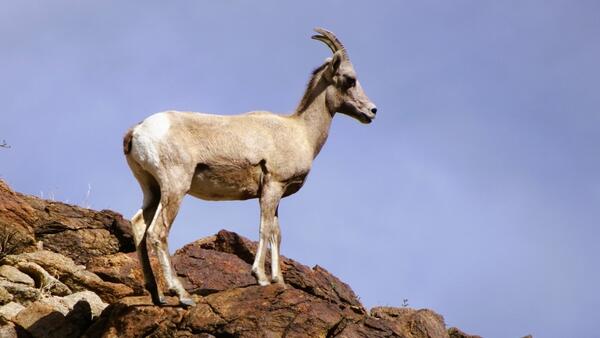There's more to conservation than charismatic megafauna
“All things bright and beautiful, all creatures great and small, all things wise and wonderful ...” – Cecil Frances Alexander (1848)
Ms. Alexander was referring to “all god’s creatures” and at the same time making an argument that all life is precious, regardless of whether we perceive them as cute, or cuddly, as food, or otherwise of economic importance. Yet in practice we humans are anything but egalitarian when it comes to nature. Whether for scientific research, conservation priorities, and what folks post on social media, “charismatic megafauna” (large creatures, mostly mammals and birds of prey) get the most attention. As a focus for conservation efforts, one could argue that because large creatures require large spaces to survive, that there is an “umbrella effect.” Adequately protecting those charismatic big animals more easily engenders public support and through those conservation efforts lots of smaller, less cute and cuddly creatures are protected under the same “umbrella.”
Here, desert bighorn sheep are our charismatic megafauna, and to a large extent we can thank those sheep for our mostly undeveloped mountain slopes that form the backdrop to the Coachella Valley.
I am referring to the Peninsular bighorn sheep, a population that is restricted to the Peninsular Mountain Range extending from the slopes of the San Jacinto Mountains above Palm Springs south into central Baja California, Mexico. All North American bighorn sheep south of Alaska and northern Canada are currently considered the same species, Ovis canadensis. However, the desert sheep, occurring on mountain ranges throughout the Great Basin, Mojave, Sonoran, Chihuahuan, and Colorado Deserts, are a separate subspecies, Ovis canadensis nelsoni, or Nelson’s bighorn sheep. Peninsular Range sheep were long thought to be their own subspecies, however, the current “state of the art” genetic analyses do not support that separation. Nevertheless, under the federal Endangered Species Act, species, subspecies, and distinct populations can all be considered for protection. Peninsular Range sheep received protection in 1998 as a distinct population segment.
Initially it was not the potential for hillside suburban sprawl that endangered these sheep, it was disease. In a manner that mirrors how human diseases inadvertently brought by European colonists nearly decimated the North American indigenous tribes, early 20th century domestic sheep and cattle grazing in the Santa Rosa and San Jacinto Mountains brought with them upper respiratory diseases for which the bighorn sheep had no immunity, nearly decimating the native sheep. Still, urban sprawl was a separate contributor to this population’s decline. While bighorn sheep are noteworthy for effortlessly scaling steep rocky slopes, at least historically they also spent time on alluvial fans where they foraged on some of their favorite foods such as catclaw acacia (Senegalia greggii) and desert star vine (Brandegea bigelovii). Much of Palm Springs, Cathedral City, Rancho Mirage, Palm Desert, Indian Wells, and La Quinta are built upon those alluvial fans.
Today the Peninsular bighorn sheep population is recovering. Climate change born warmer and drier winters seem to have reduced the incidence of pneumonia in the newly born bighorn sheep lambs, and the herds are growing. Bighorn sheep biologists track the size and number of “ewe groups” as a measure of their population health. Similar to African elephants, bighorn sheep are born into matriarchal groups led by senior ewes who know where to find food and water, and avoid predators, across an otherwise parched landscape. The adult rams wander in and out of ewe groups to assess whether or not ewes might be reproductively receptive.
As a result of climate change, water holes have been disappearing, a trajectory that should be sending the ewe groups into a tailspin of decline, yet at least so far that has not been the case. All species need water to survive. In part the reason the sheep are not in a tailspin could be due to artificial but more dependable water sources that have been created through conservation measures. Another reason for the sheep’s population growth despite the on-going drought is that the rams know how to get water from barrel cacti. They use their horns to break open the cacti where they can find water-saturated pulp. Once broken open, the barrels are then also accessible to ewes and lambs. Of course, barrel cacti do not survive being pulverized by the sheep, and since these cacti are very slow growing the cacti as a sheep water source may be a finite and slowly dwindling water resource.
A limited and declining number of water holes, whether naturally occurring or artificial, creates another challenge for desert bighorn sheep. Predators, specifically mountain lions, know that the sheep need water. Decades ago, when there were many more natural water holes, mountain lions could never be sure where the sheep might show up. I have had long-term desert naturalists tell me that when they were younger, say prior to the 1970s, they would never carry canteens as they hiked through the desert slopes of the Santa Rosa and San Jacinto mountains. The water holes were so abundant that they needed to just hike into a canyon to find a drink of pure spring water. As a result of climate change those days are long gone. If it was not for the dispersed water resources found in barrel cacti, with fewer natural springs the mountain lions would be assured that with a bit of patience ewe groups would arrive at a remaining water hole every few days. Dinner would be served. This has created a moral dilemma for bighorn sheep conservation efforts. I once heard a biologist gleefully announce that a resident mountain lion in Anza Borrego Desert State Park had finally died (presumably from natural causes), and so “his beloved” sheep would be predator free (for a while). This is more than a bit of a departure from an “all creatures great and small” view of nature. In the past there have been discussions within the bighorn sheep conservation community about predator control, discussions that were seemingly oblivious to the ecological disasters that have been wrought through predator control efforts elsewhere. A single charismatic megafauna view of nature and of conservation can sometimes lead to myopia, forgetting how interconnected nature is, and how important those interconnections are. For now, the sheep population, the number and size of the ewe groups, is growing.
I once dabbled in charismatic megafaunal biology and conservation when my wife and I did pioneering research on spotted owls. No one ever asked why we studied spotted owls; they were charismatic and that was enough to assuage people’s curiosity. However, the owls were widely spaced, making assessing changes on a population scale more than a full-time job. Also, even among scientists there was political maneuvering to be in the spotlight (why would they be any different than any other profession?). I shifted my attention to lizards, which I found to be more than charismatic enough and much easier to understand what was happening across populations in response to environmental changes. All creatures great and small have something to teach us.
Nullius in verba
Go outside, tip your hat to a chuckwalla (and a cactus), think like a mountain, and be safe

